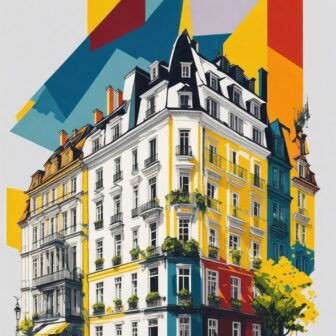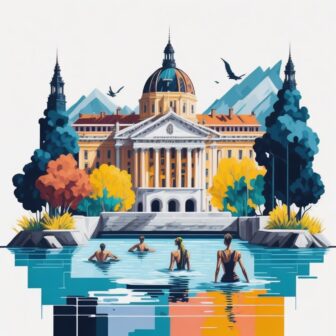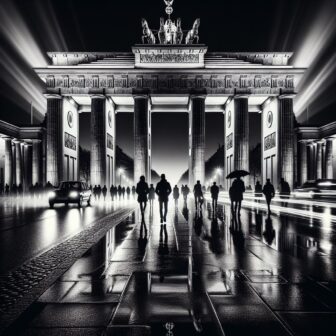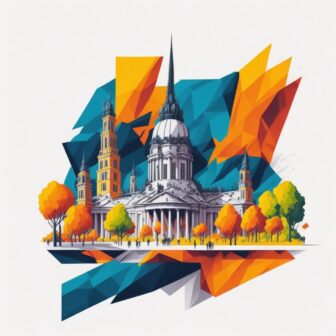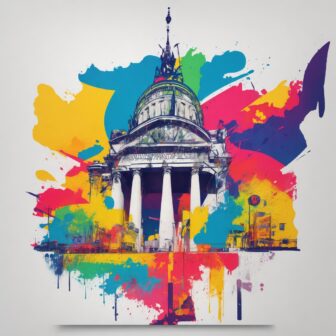Brandenburger Tor Berlin
As a Berlin resident, the Brandenburg Gate is not just an iconic landmark—it’s an integral part of my daily surroundings. Nestled in the western part of the city center within Mitte, at the junction of Unter den Linden and Ebertstraße, the Brandenburg Gate stands as a testament to the rich history, architectural grandeur, and symbolic significance that define Berlin and Germany. Join me on a journey through time as we unravel the layers of this 18th-century neoclassical monument, exploring its history, marveling at its architecture, and understanding its profound role as a symbol of unity and peace.
Address: Pariser Platz, 10117 Berlin, Germany. Brandenburger Tor is located in the western part of the city center within the Mitte district, at the junction of Unter den Linden and Ebertstraße, immediately west of Pariser Platz.
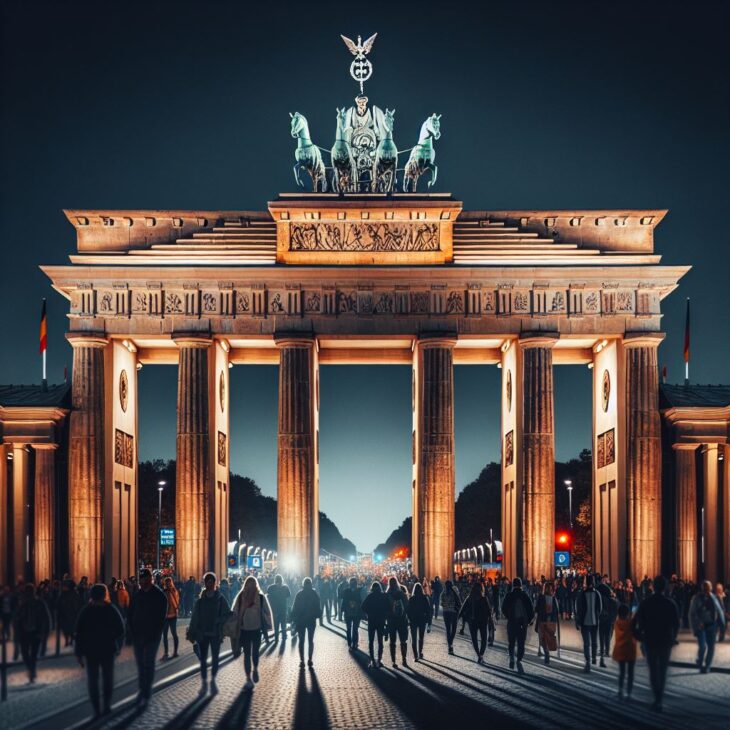
A Glimpse into History:
The Brandenburg Gate stands as a sentinel, witnessing centuries of history unfold. Its roots extend back to the late 18th century when it was commissioned by the visionary King of Prussia, Frederick William II. Built on the site of a former city gate, it marked the beginning of the road from Berlin to the town of Brandenburg an der Havel. This monumental archway, with its Doric columns and triumphant structure, has played a pivotal role in shaping the narrative of Germany.
The gate is not just a physical structure but a silent witness to the tumultuous events that shaped the course of the nation. It stood firm during the periods of separation and reunification, becoming a living testament to the resilience and strength of the German people. As a resident, standing before the gate is a daily acknowledgment of the city’s rich history, a connection with the echoes of the past embedded in the present.
Architectural Marvel:
Approaching the Brandenburg Gate is an architectural pilgrimage. The meticulous design, inspired by the Propylaea and Roman triumphal arch traditions, showcases a fusion of classical styles. Twelve fluted Doric columns, standing with regal poise, form five passageways that beckon visitors into its historical embrace. The central portion draws inspiration from Roman triumphal arches, yet it marks the dawn of Greek Revival architecture in Germany.
As you explore the intricate details of the gate, each column tells a story of craftsmanship and vision. The architects carefully melded different influences to create a structure that not only reflects the grandeur of the past but also sets the stage for the architectural evolution that would follow.
REALED:
Best Places to Visit in Berlin
1 Day Itinerary in Berlin
16 Best Things to Do in Berlin
Symbol of Unity and Peace:
Beyond its architectural magnificence, the Brandenburg Gate is a powerful symbol of unity and peace. It holds a significant place in European history, embodying the tumultuous past of Germany and the continent. Today, it stands as a national symbol, representing the strength and resilience of the German people. The gate has witnessed and played a crucial role in major events, including the fall of the Berlin Wall in 1989.
The Quadriga, a sculpture crowning the gate, adds another layer to its symbolism. Initially taken by Napoleon during the French occupation, it was later restored to its rightful place atop the Brandenburg Gate. The Quadriga, a chariot drawn by four horses driven by the goddess of victory, symbolizes triumph, resilience, and the pursuit of peace.
Visiting the Brandenburg Gate:
The Brandenburg Gate welcomes visitors throughout the year, and the best part is that it’s free to explore. Easily accessible by public transport, the nearest U-Bahn station is Brandenburger Tor. Guided tours offer a deeper understanding of the gate’s history and significance. As you stroll through the passageways, you’ll find yourself immersed in the stories that echo through time.
While exploring the gate, take a moment to appreciate its adaptive reuse. Once a symbol of division during the Cold War, the gate now stands as a unifying force. It’s a testament to the transformative power of history and the human spirit.
Events and Vibrancy:
The Brandenburg Gate isn’t just a static monument; it’s a living part of Berlin’s cultural scene. Hosting concerts, festivals, and various events, it continues to be a vibrant hub of activity. The gate’s iconic structure provides a backdrop for these events, creating an unforgettable experience for both locals and visitors.
Visiting during one of these events adds a dynamic layer to your experience. Whether it’s a music concert, a cultural festival, or a commemorative event, the gate becomes a stage for celebrating unity and diversity. Check the local event calendar to align your visit with these lively gatherings.
Nearby Attractions:
Surrounded by historical landmarks, a visit to the Brandenburg Gate offers more than just its own rich history. Take a leisurely stroll down Unter den Linden, a boulevard leading to the royal City Palace of the Prussian monarchs and the Berlin Cathedral. Don’t forget to explore the nearby Reichstag building, housing the German parliament (Bundestag), adding another layer to the historical tapestry.
Discover the interconnectedness of these landmarks, each contributing to the cultural mosaic of Berlin. The Reichstag, with its glass dome symbolizing transparency, stands as a counterpart to the historical solidity of the Brandenburg Gate. Together, they narrate a story of resilience, transformation, and the continuous pursuit of democracy.
Planning Your Visit:
For those planning a trip to Berlin, the Brandenburg Gate is a non-negotiable stop. Beyond its historical and cultural significance, it provides a glimpse into the city’s rich history and culture. The gate’s resilience and role in shaping Germany and Europe make it an essential destination for those seeking a deeper understanding of the region.
To make the most of your visit, consider the time of day. The gate takes on different personalities with the changing light, whether it’s bathed in the golden hues of sunrise or illuminated against the night sky. Capture these moments on camera or simply bask in the ambiance of this historical masterpiece.
In Conclusion:
In conclusion, the Brandenburg Gate is more than a monument; it’s a testament to the intertwined histories of Germany and Europe. As you stand before its grandeur, you’ll not only witness architectural brilliance but also feel the echoes of the past and the promise of unity and peace that transcend time. Explore, learn, and be captivated by the iconic Brandenburg Gate—an enduring symbol that stands as a guardian of history and a beacon of hope.

